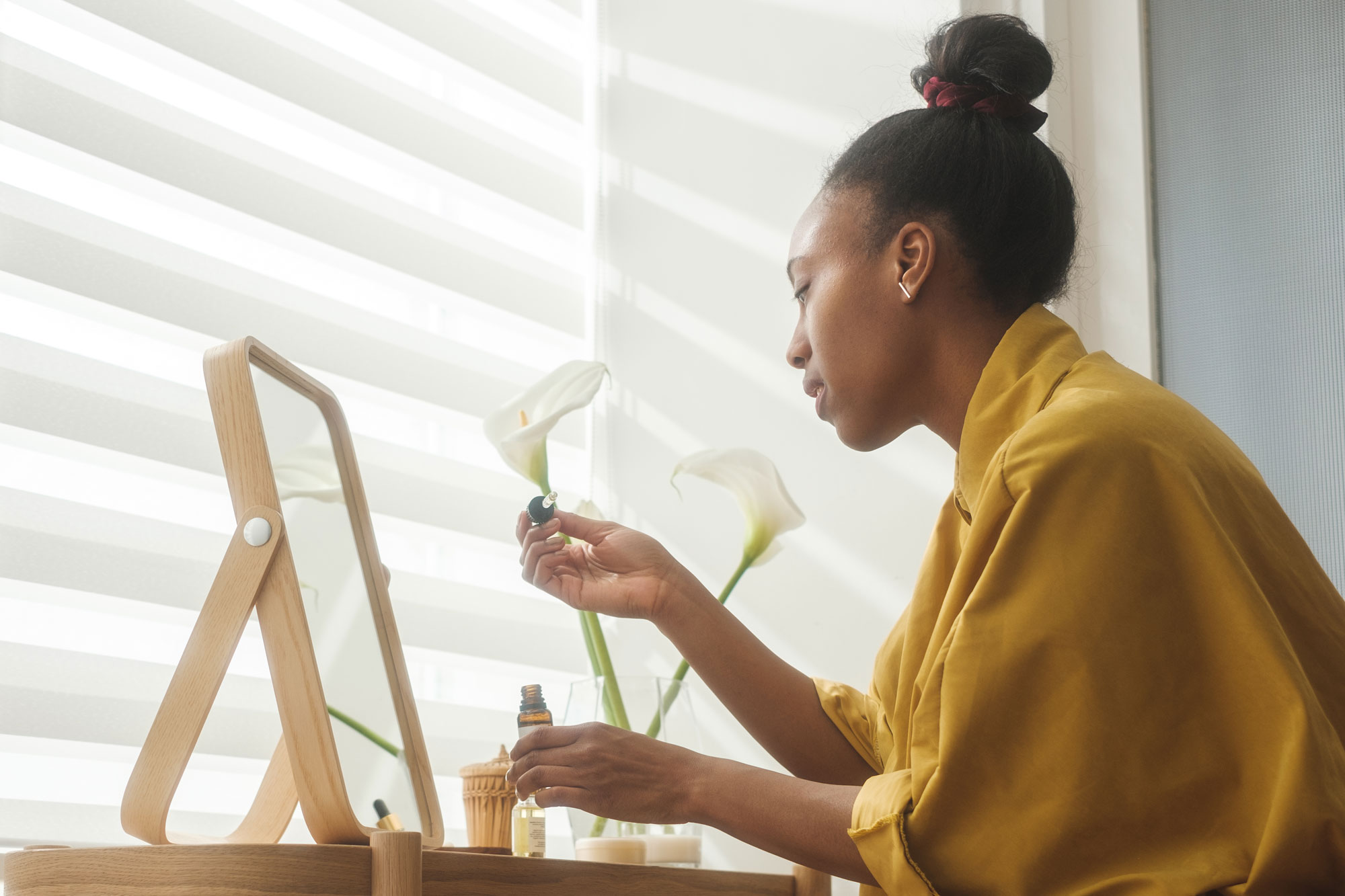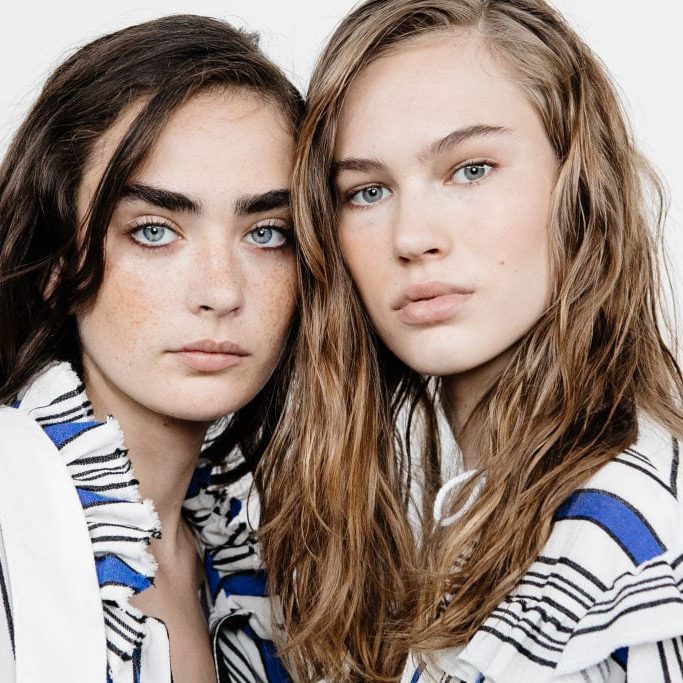There are few hairstyles chicer than the slicked back bun. It’s hard to imagine how the low maintenance style could possibly get better. Leave it to TikTok to come up with a truly genius beauty hack: rather than use pomade or hairspray to get the sleek look, apply a treatment mask. Hello, efficiency.
“I love a sleek bun or ponytail, and if you use nourishing products instead of gels or pomades to achieve the look, your hair soaks in those benefits,” says Alex Brown, Chicago-based celebrity hairstylist and owner of Space by Alex Brown.
We’re calling it: 2023 is the year of the treatment bun.
Meet the Experts
Alex Brown is a Chicago-based celebrity hairstylist and owner of Space by Alex Brown.
Ali Ryan is a Nashville-based hair stylist and owner of The Dry House salon.
The overnight popularity of treatment buns isn’t surprising considering the boom in anti-breakage hair treatments. “I think we’ve seen an overall shift focusing on hair health and treatment buns,” says Brown. “They’re an easy way to care for strands without adding time to your routine.” It’s the ultimate multi-tasking hair hack. “This style is a triple threat because it looks chic, treats your hair, and doesn’t cause any damage,” adds Ali Ryan, Nashville-based hair stylist and owner of The Dry House salon. “This maximizes benefits across the board.”

Your step-by-step guide to the perfect treatment bun
The best thing about a treatment bun, as Brown points out, is its versatility. You can throw hair into one before a workout (more on that in a moment), or just as easily wear one to the office. It’s as great for fine hair as it is for coarse, dry strands. It can be part of your weekly routine, or used as more of a special once a month treatment. “For fine, healthy hair, I recommend doing it once a month,” advises Brown. “When using a mask, I recommend doing it 1-2 times a month for more of a deep treatment.”
To make your haircare routine as efficient (and chic) as possible in 2023, here’s how to pull off the perfect treatment bun, according to the experts.
1. Start with second day hair.
To get the best results from your treatment bun, start with dry second- or third-day hair, “when your scalp has natural oils,” Brown says. Her favorite time for a treatment bun is before going to the gym. “The heat from your scalp helps the product absorb into your hair,” she explains.
2. Pick the right product.
There’s a wide range of products that work well with treatment buns — hair oils, bond builders, hydration masks — but there are a few things to keep in mind before saturating your strands, according to stylists. To prevent product buildup that can weigh down your hair even after you wash, avoid heavy products, Brown says. “I recommend using a lightweight product and brushing it through strands,” she says. “Save heavier products for in-shower or overnight treatments.”
 Ryan is a fan of bond repair treatments like the one from epres — her “holy grail” product. “It’s lightweight, so there is no need to worry about breakage when doing a treatment bun of any sorts. It’s actually protecting and treating the hair,” she says. For hair oils gentle enough to use in a weekly treatment bun, Brown recommends Virtue Labs Healing Oil. “It will really moisturize and strengthen your hair from the inside out,” she says.
Ryan is a fan of bond repair treatments like the one from epres — her “holy grail” product. “It’s lightweight, so there is no need to worry about breakage when doing a treatment bun of any sorts. It’s actually protecting and treating the hair,” she says. For hair oils gentle enough to use in a weekly treatment bun, Brown recommends Virtue Labs Healing Oil. “It will really moisturize and strengthen your hair from the inside out,” she says.
Scalp serums can also be perfect for treatment buns, Brown adds. “The Vegamour GRO+ Advanced Hair Serum is one of my favorites to promote hair growth,” she says. Finally, you can use a lightweight hair mask. “OUAI Fine to Medium Hair Treatment Masque is great for fine hair and will moisturize without leaving the hair too weighed down after rinsing,” Brown says.
3. Start at the ends of your hair.
Since product will be sitting in your hair so long, avoid your roots (unless you’re using a scalp serum). Brown advises working product into strands starting at the ends: “This should ensure that most of the product is applied to more-porous ends” — which tend to be the most dry and damaged part of your hair — “and through mid-lengths.”
Brush the product through and then pull it into a sleek bun. “My favorite look right now is a deep side part, which is a trend I predict will take off,” says Ryan. “Then I twist the style into a low bun and secure it with a satin scrunchie for even more protection.”
4. Don’t forget aftercare.
You can confidently wear a treatment bun all day — even overnight if you want extra hydration. But after the treatment, you should always fully wash your hair, rather than just rinsing the treatment out. (Another reason it’s good to start with second- or third-day hair.)
“If hair is more soft and fine, you may be able to skip conditioner, but treatment buns are most beneficial for those with dry, damaged, thicker strands in need of more nourishment,” Brown explains, “so your regular shampoo and conditioner routine should be a great complement to the treatment.” To reduce any risk of buildup, add a monthly detox shampoo.
We only recommend products we have independently researched, tested, and loved. If you purchase a product found through our links, Sunday Edit may earn an affiliate commission.







